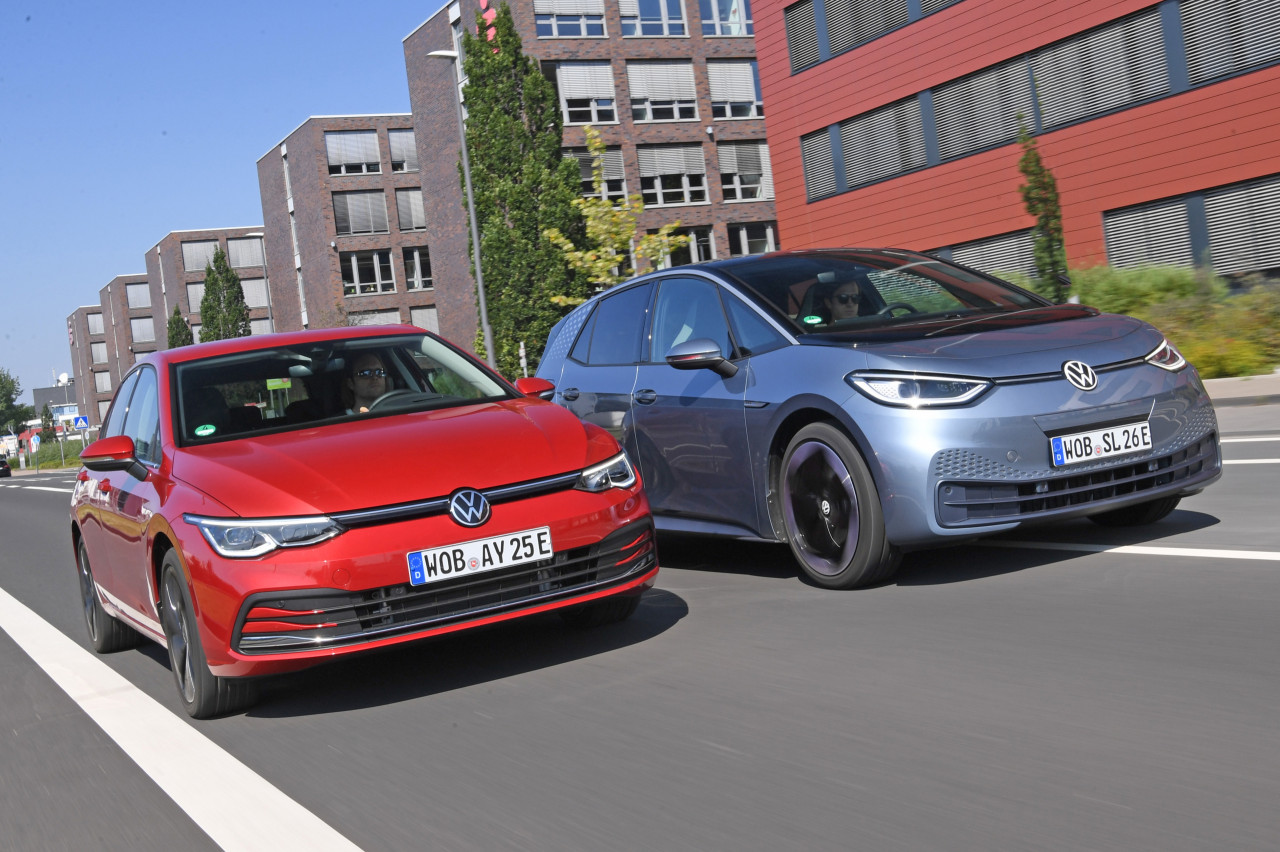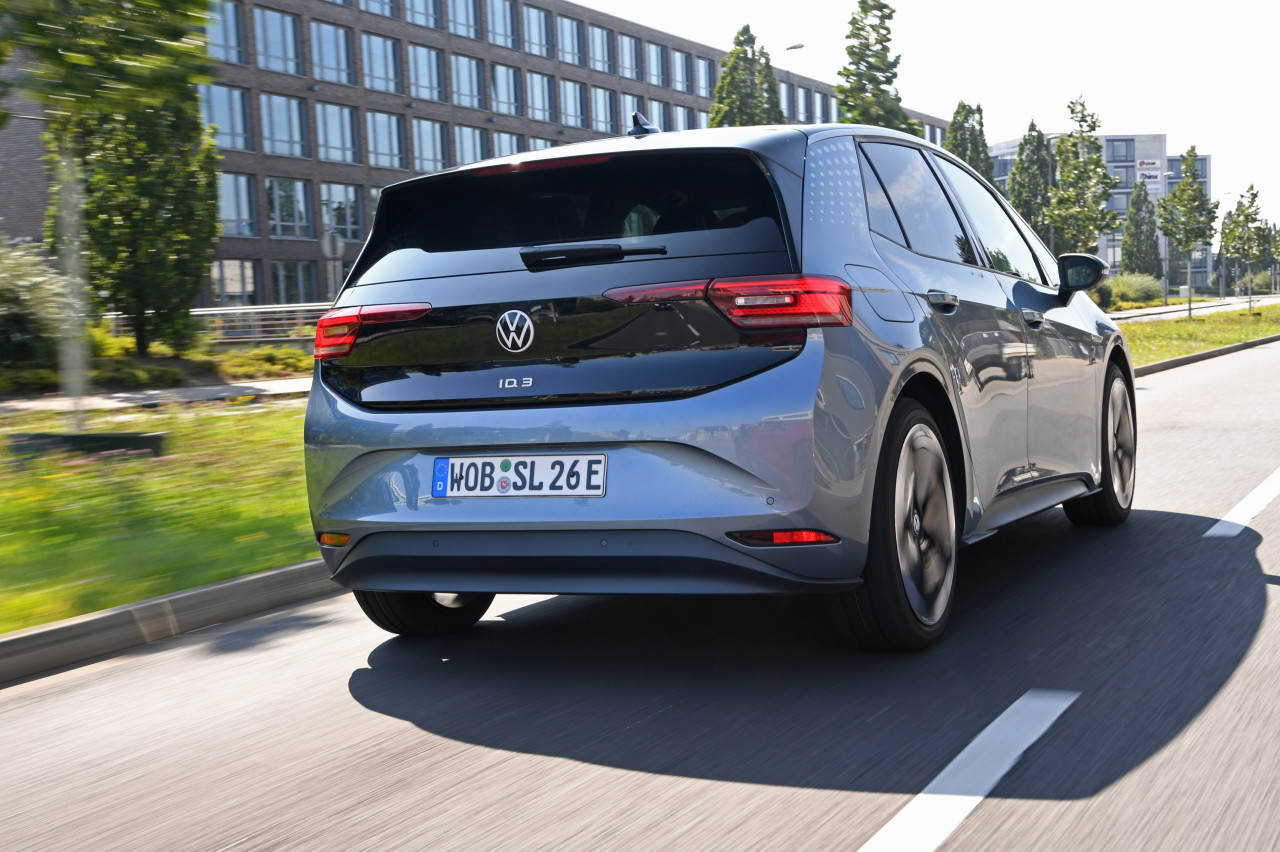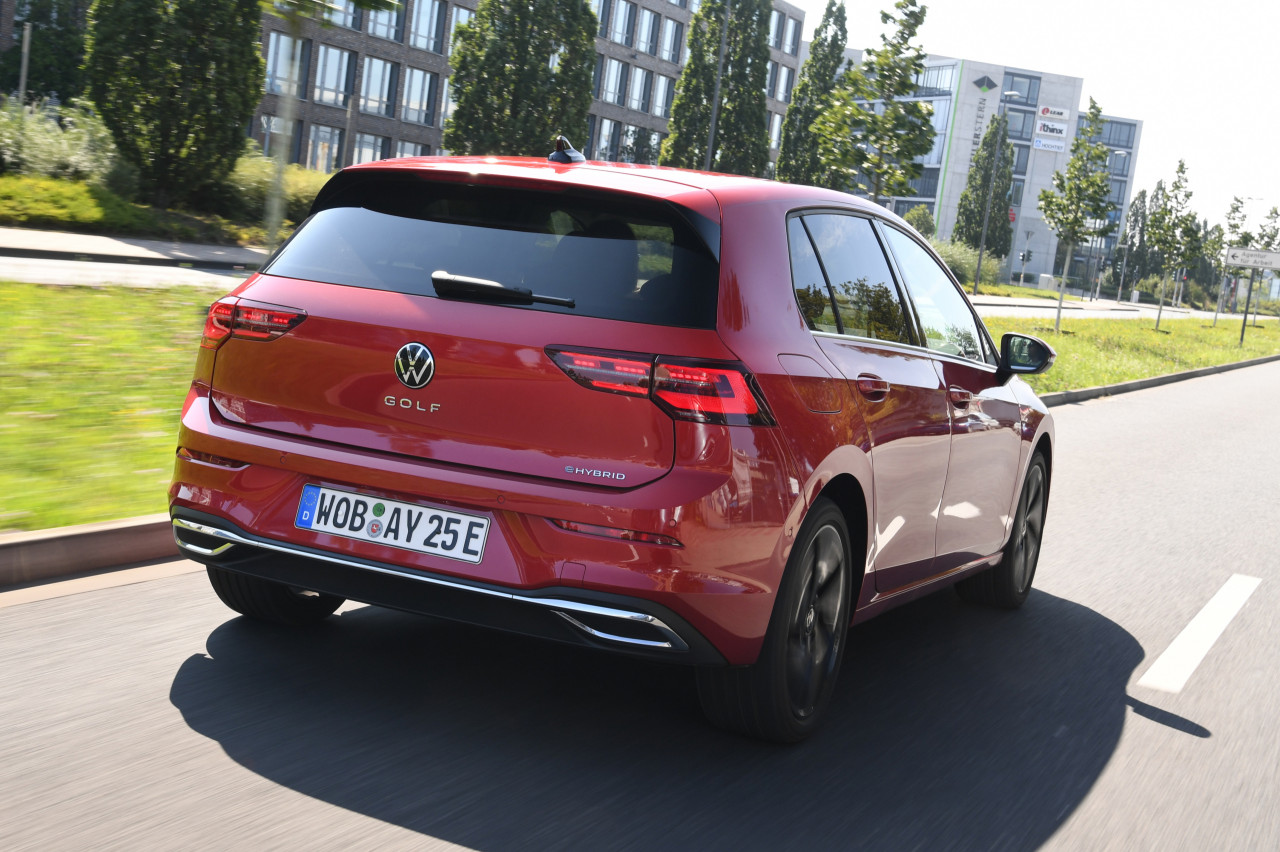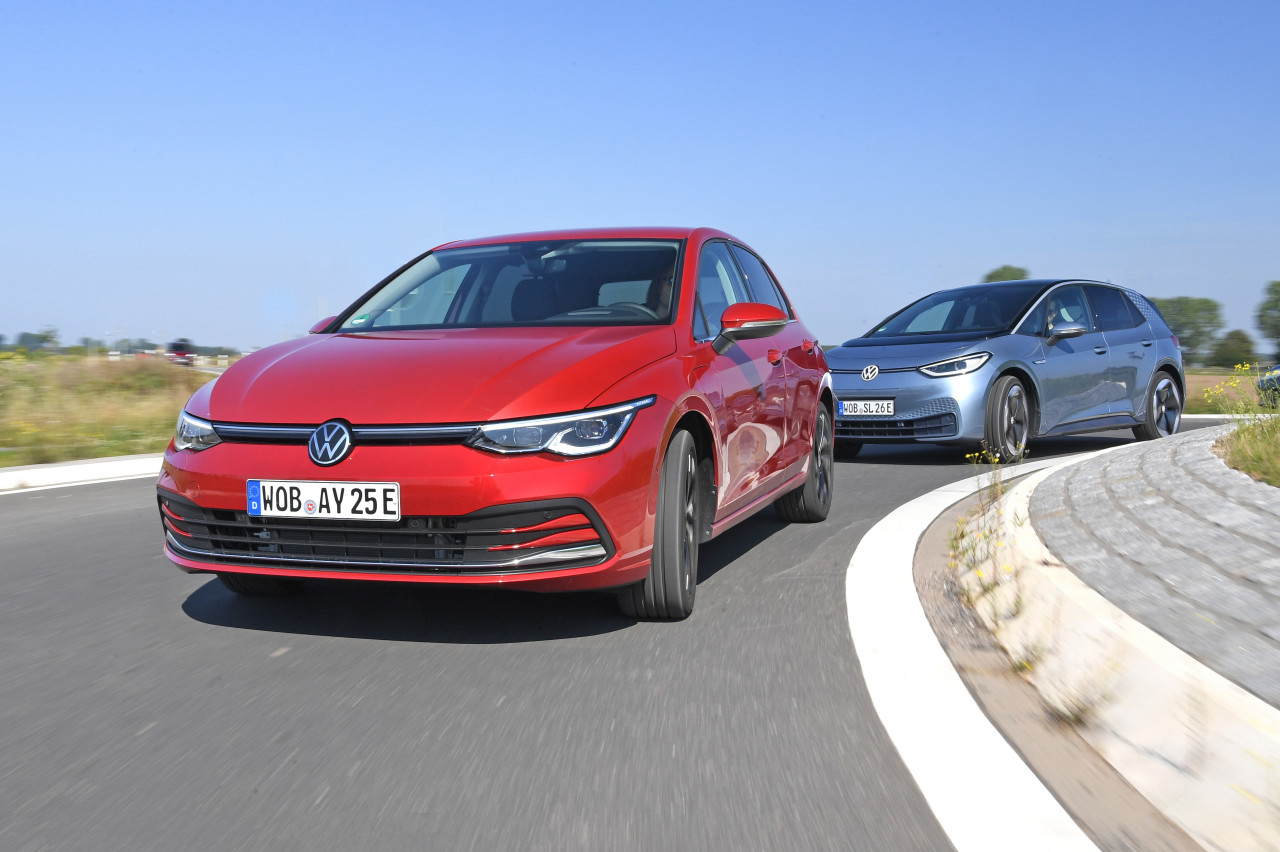If we look at the Dutch sales figures for 2021, the Volkswagen Golf seems to have no child with the ID.3. Last year clearly more Golfs were sold than ID.3s. But if we add numbers from 2020, the Volkswagen ID.3 does better. Will the role of the Gulf soon be over? Looking at the handling characteristics, it doesn’t look like that yet…

You can hardly imagine it. For generations, this everyone’s friend was the benchmark in the compact middle class. In addition, the Volkswagen Golf has been a trendsetter for hot hatchbacks and compact diesels. But yes, the interest in hot hatches is waning – not least because of the high prices. And at the hands of Volkswagen itself, the diesel engine has already been marginalized, especially in the Netherlands.
On the other hand, a fully electric car is still a bridge too far for many people. Perhaps ‘that good old Golf’ as a plug-in hybrid is the ideal interim solution. Earlier we compared the interiors and the space, now we focus on the driving characteristics.
ID.3 has all the ingredients for driving pleasure

With its low center of gravity and rear-wheel drive, the Volkswagen ID.3 has two important ingredients for a good portion of driving pleasure. But to ensure absolute driving safety, Volkswagen has tuned the stability control system in such a way that the ID.3 behaves like a front-wheel drive at high cornering speeds. So no breaking ass, but front wheels that look for the outside of the bend. The steering is quite direct, but provides little information about the condition of the road surface.
Volkswagen Golf steers better than ID.3

The front-wheel drive Golf eHybrid involves its driver more closely when driving. The steering is more communicative than in the Volkswagen ID.3. In addition, the optional 18-inch wheels make a positive contribution to the sporty driving experience.
Don’t want to miss a comparison test anymore? Then treat yourself to our newsletter!
The battery pack under the rear seat ensures that the plug-Golf has a somewhat ‘loose’ rear, but that only benefits the light-footedness. Without ever getting the feeling that the car is taking off with you, instead of the other way around. The pleasantly adjustable brakes inspire the Golf driver a lot of confidence. While the transition between braking on the electric motor and real braking in the ID.3 provides a somewhat diffuse braking feeling.
Volkswagen ID.3 does not keep up with Golf

We get the feeling that the Golf eHybrid is going to beat its electric stable mate with two fingers in the nose when it really comes down to it. But the practice turns out to be different. The time measurements indicate that the Wave on our test track and the slalom is only slightly faster than the ID.3. With a somewhat more tolerant ESP, the ID.3 would probably outperform its hybrid sibling. Also with an optional sports package, with or without adaptive shock absorbers (360 or 1170 euros), there is probably more driving pleasure in the ID.3. But unfortunately the test car does not have those special dampers on board.
The full comparison test between the Volkswagen Golf eHybrid and the Volkswagen ID.3 can be found in Auto Review 1/2022 – now available to order!